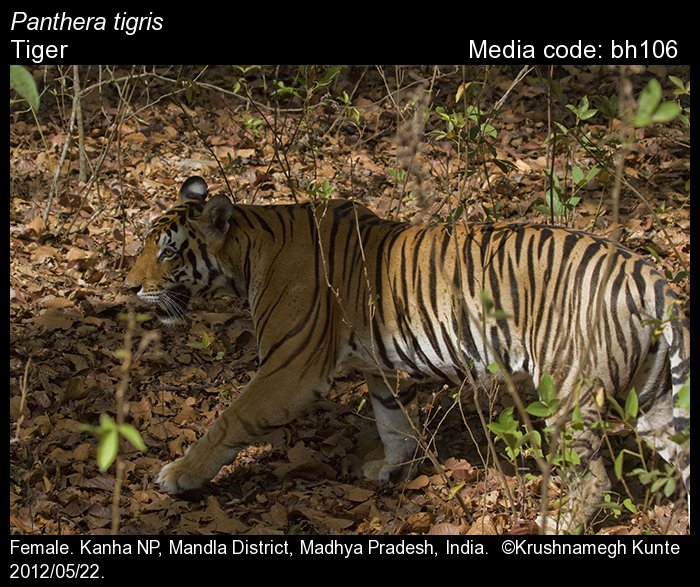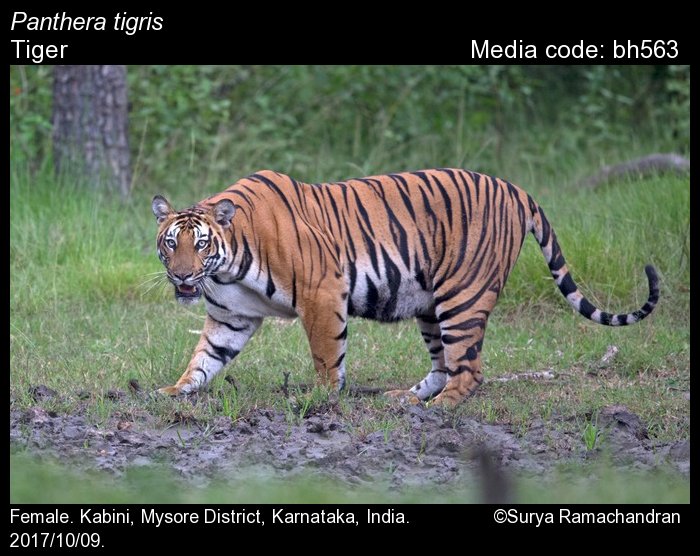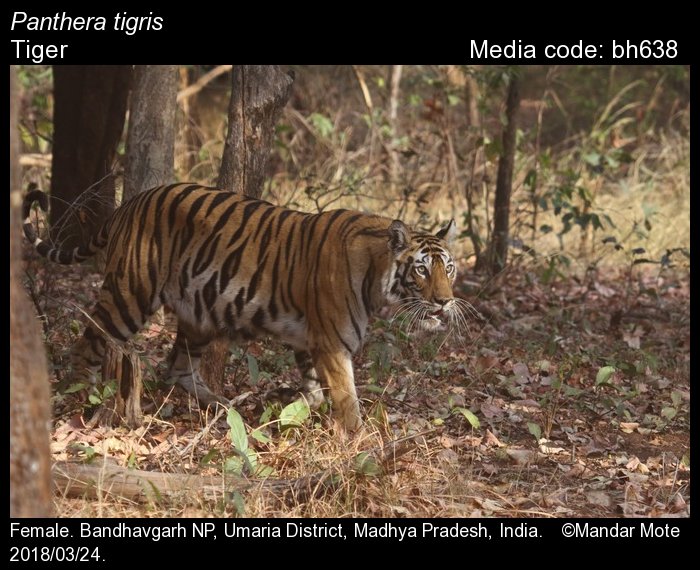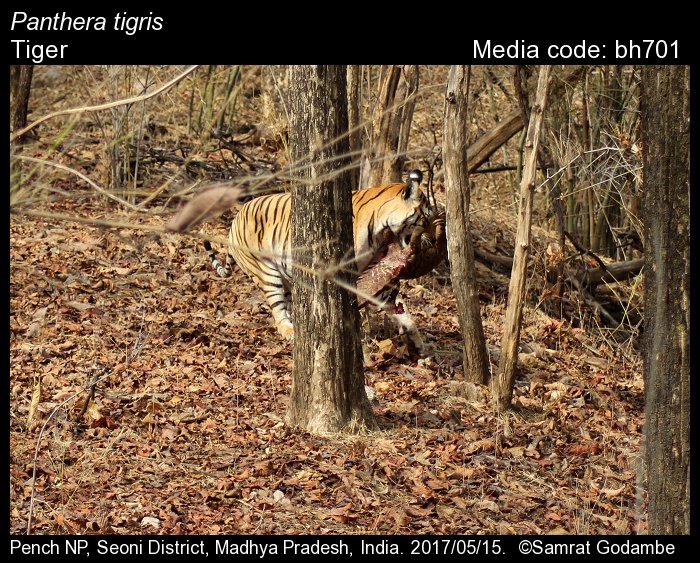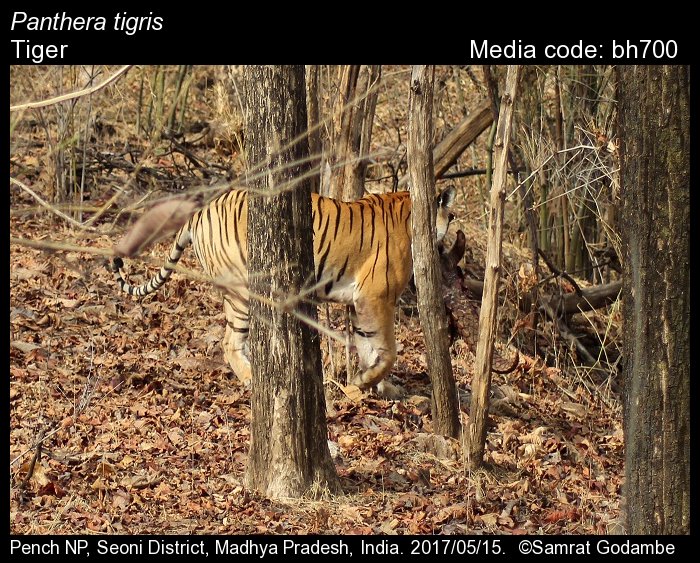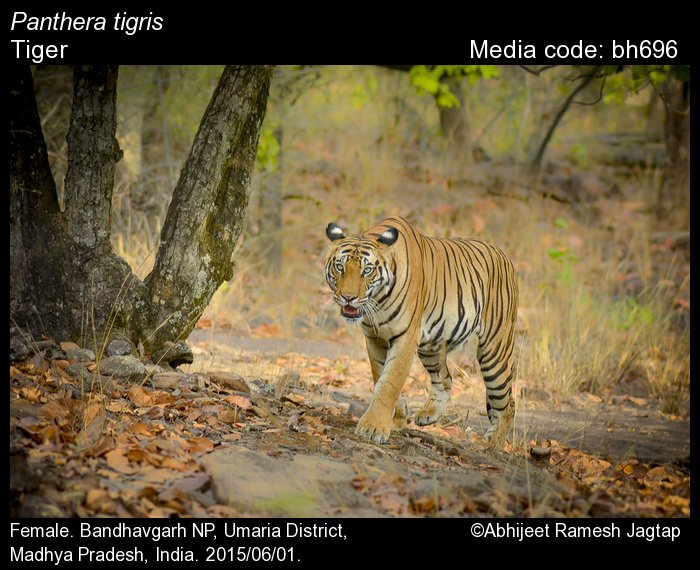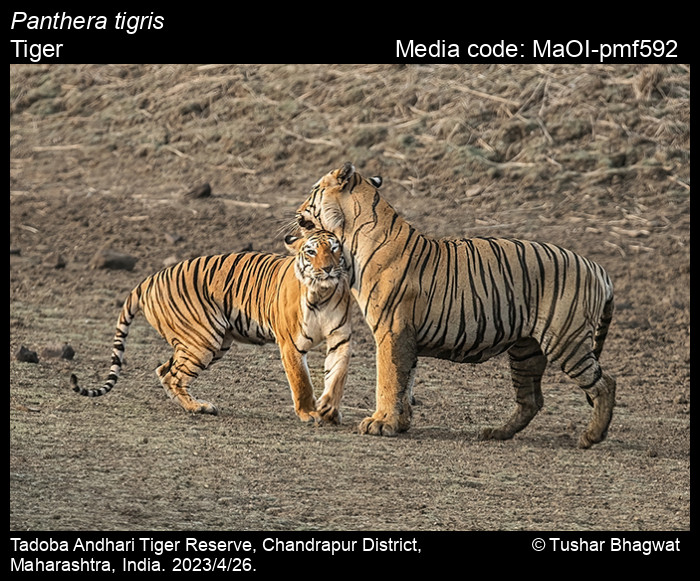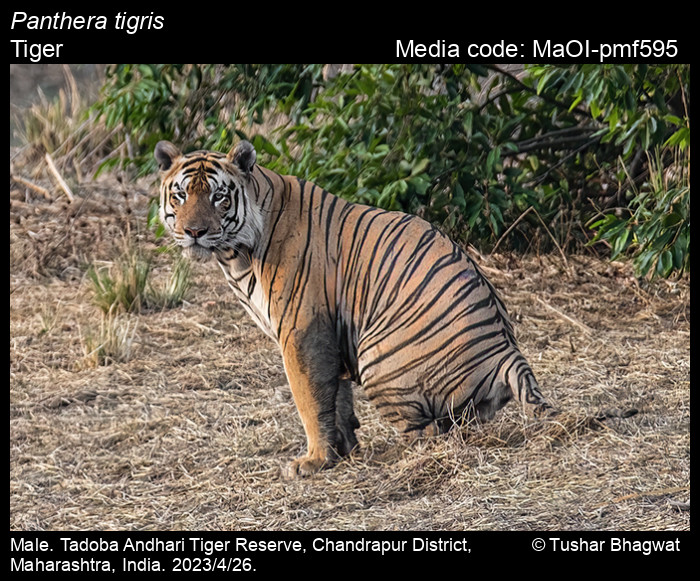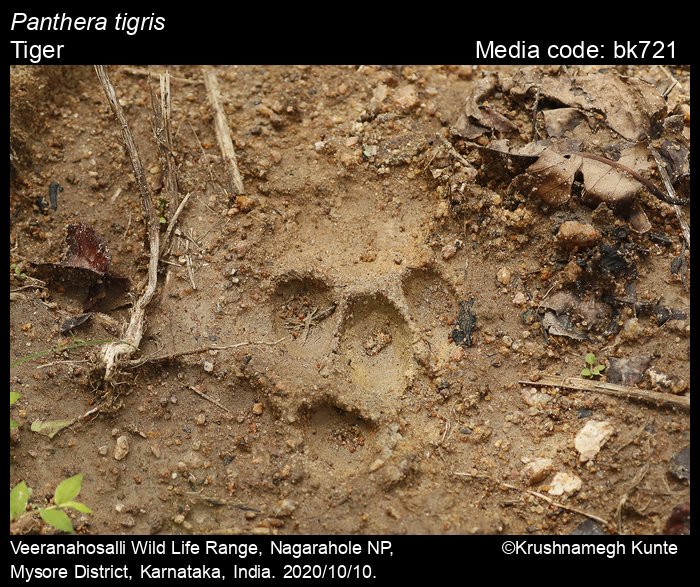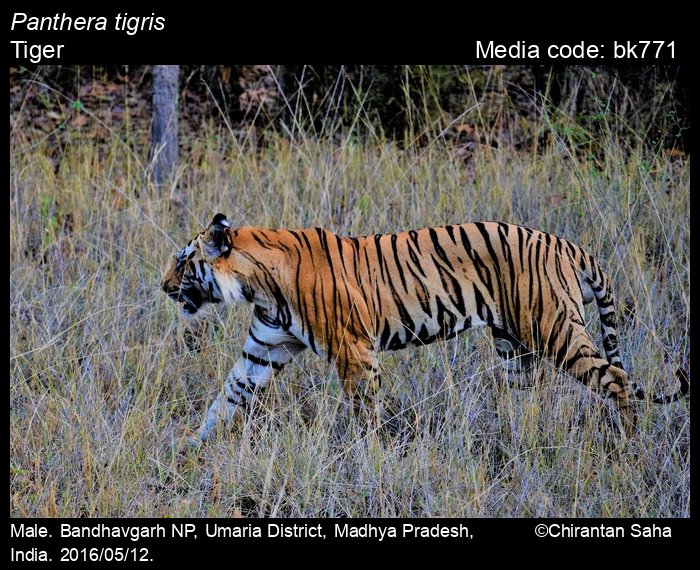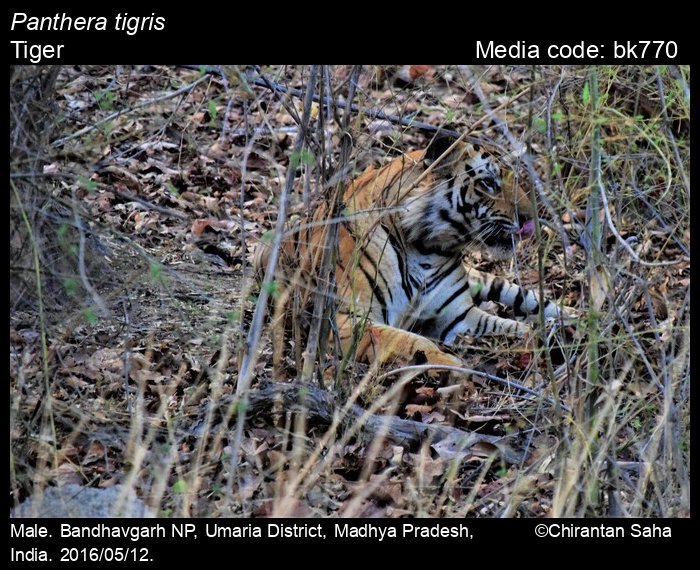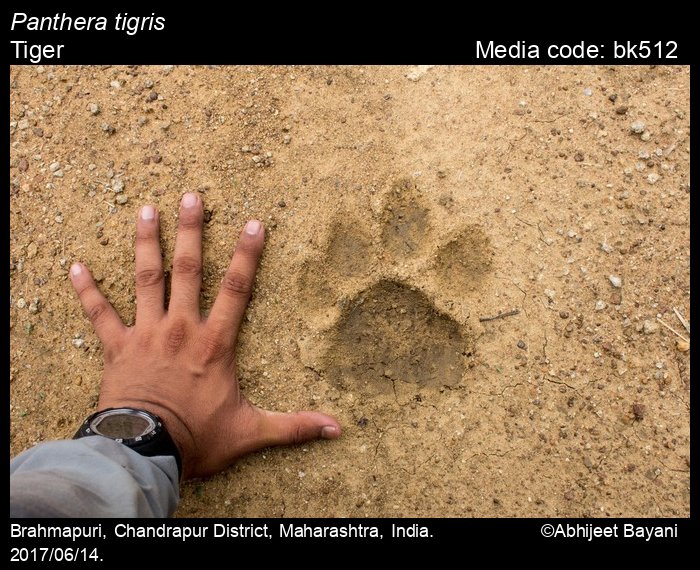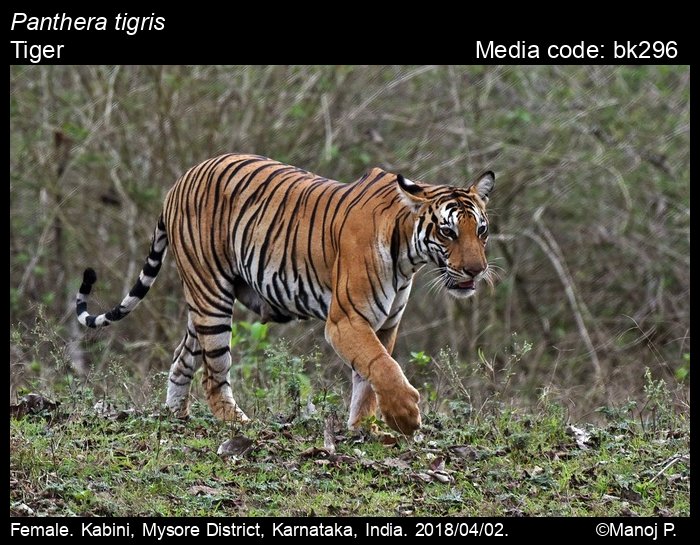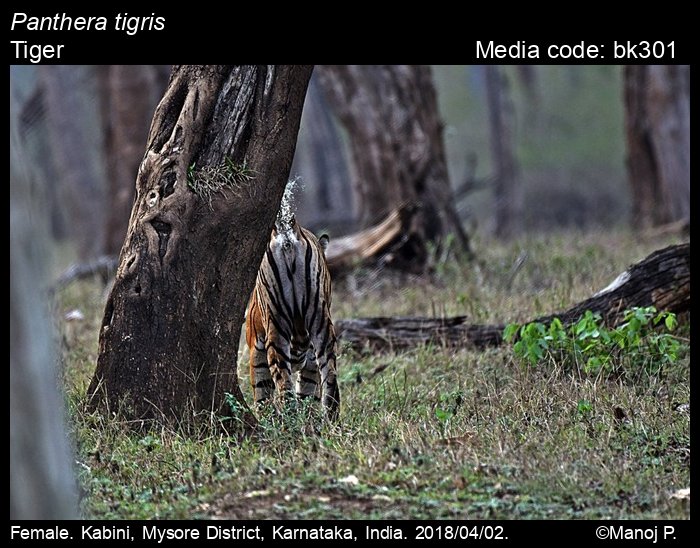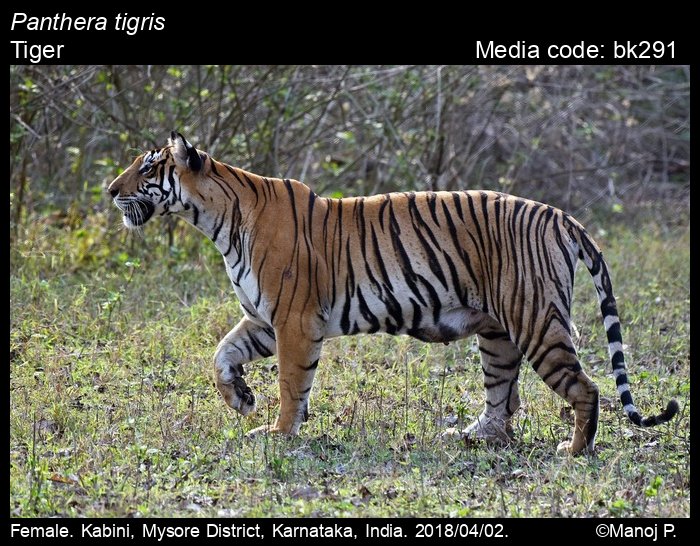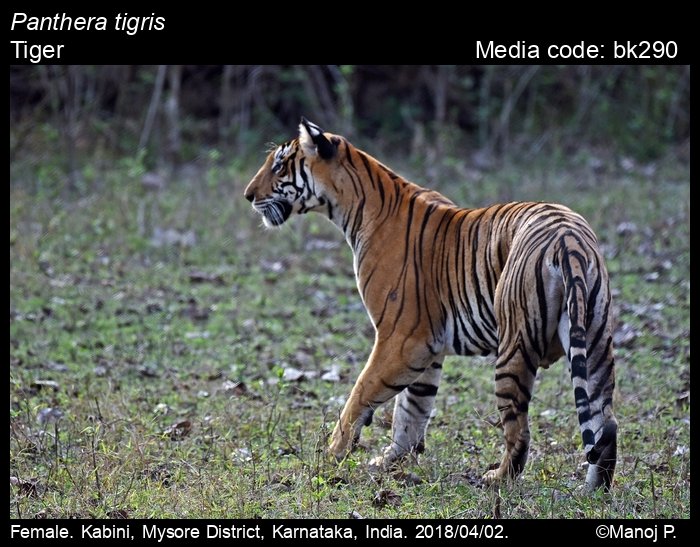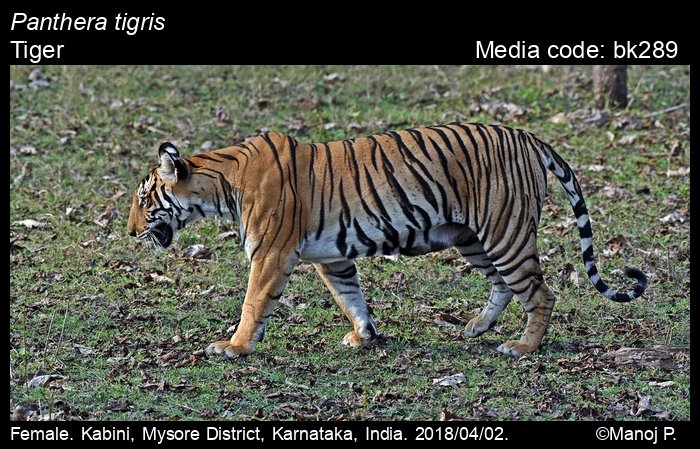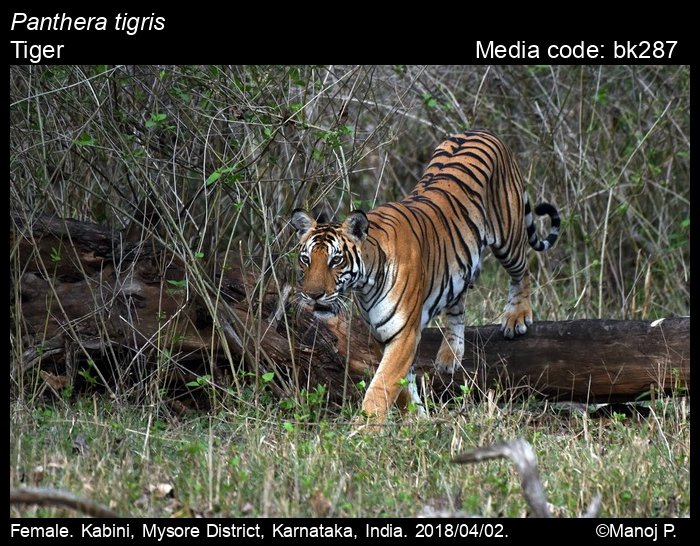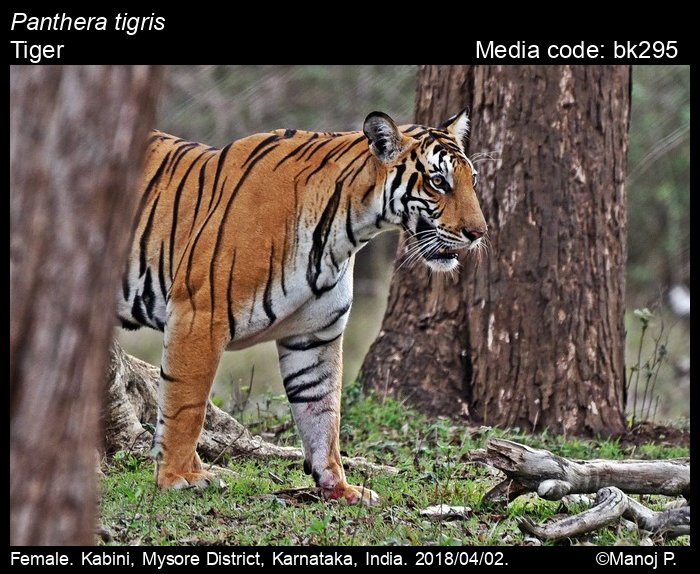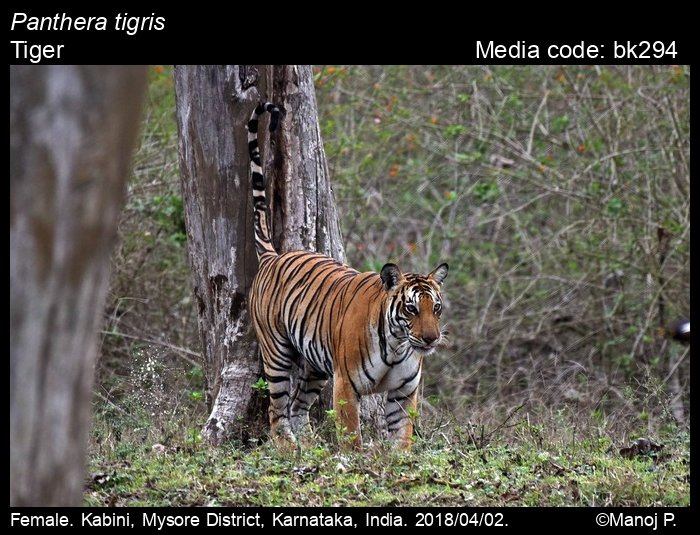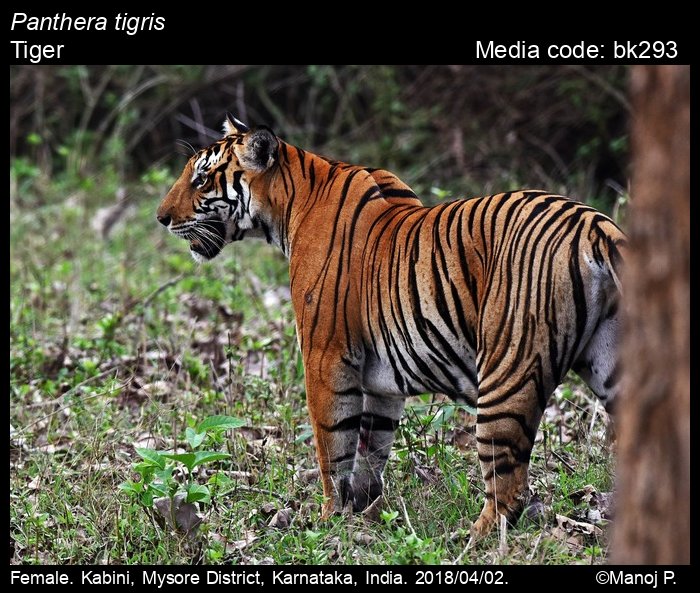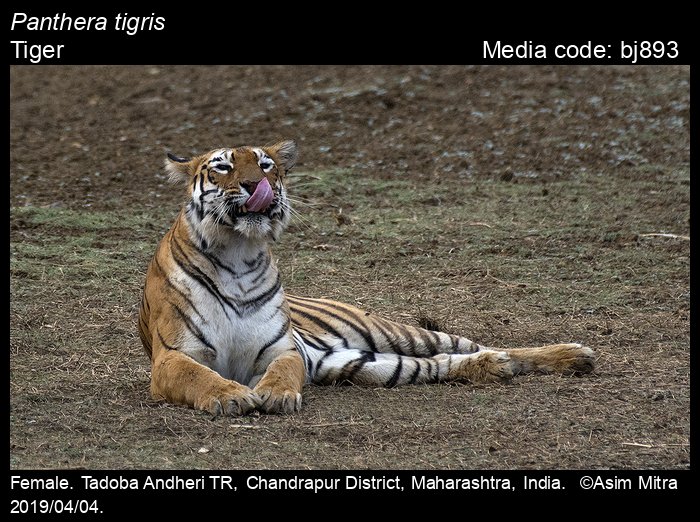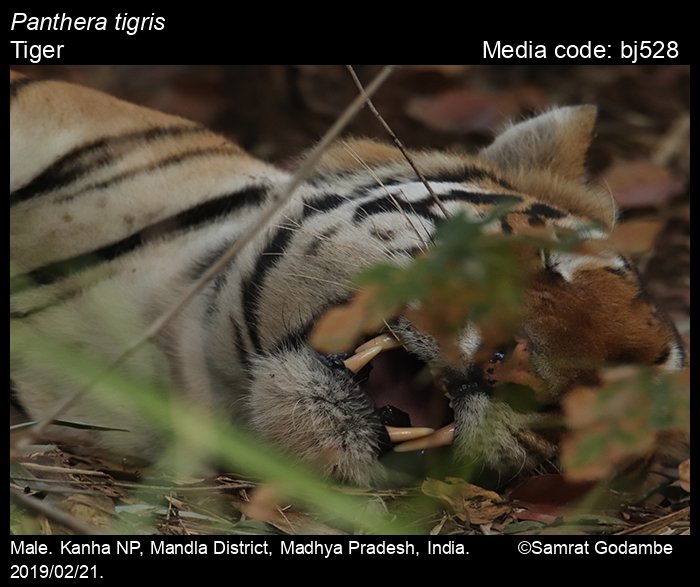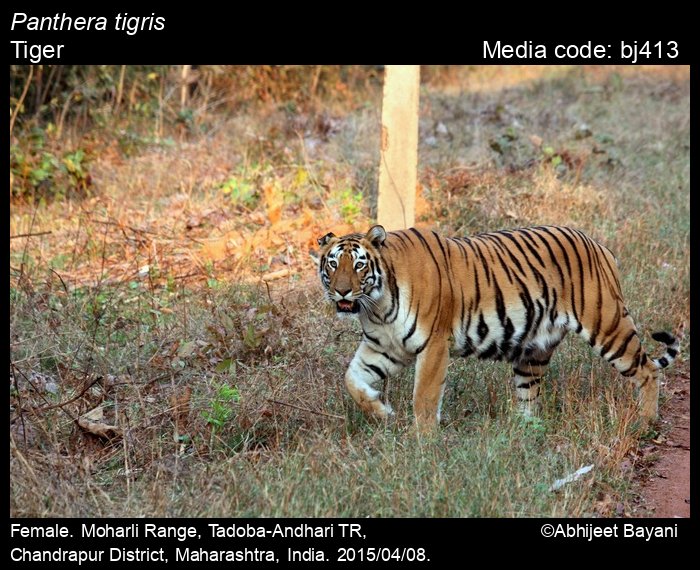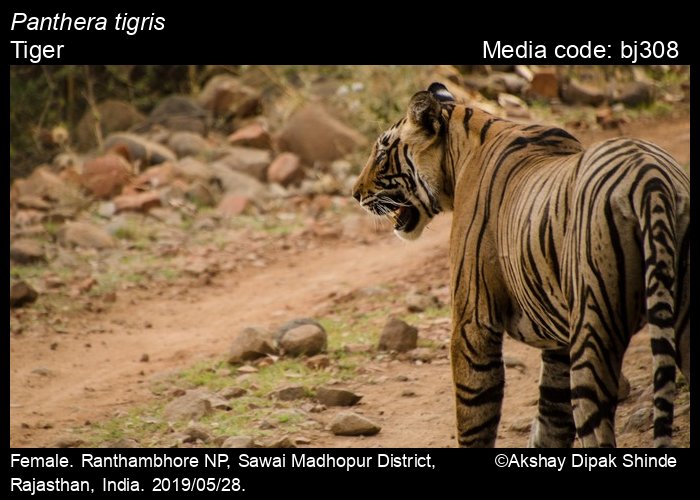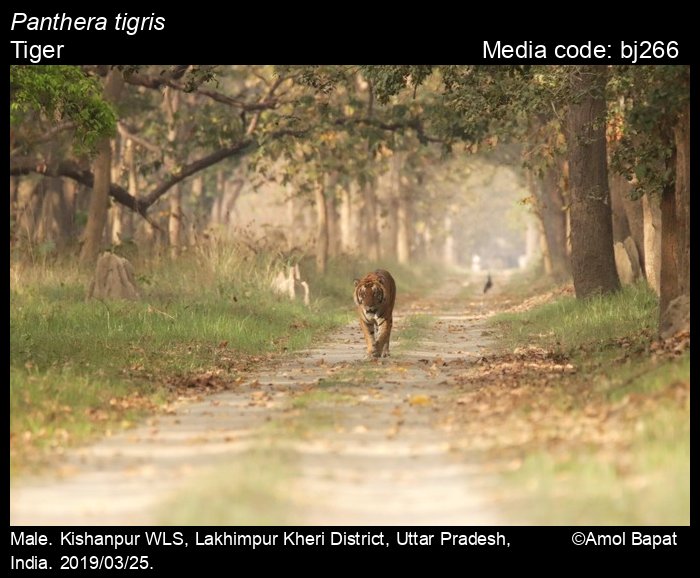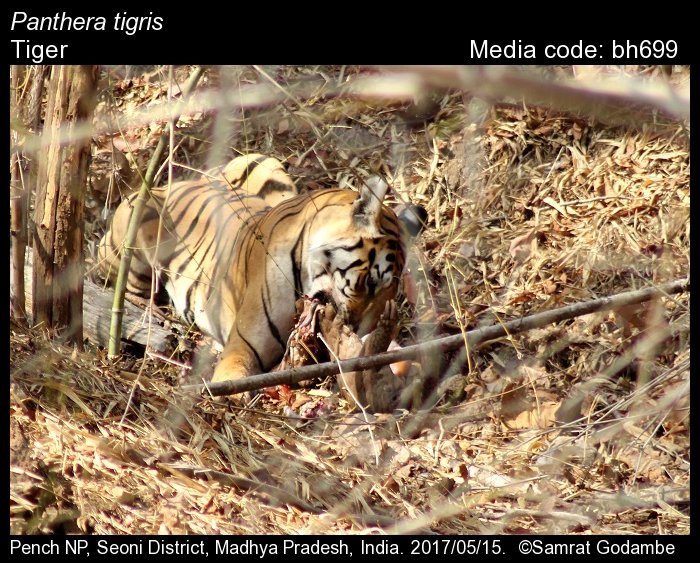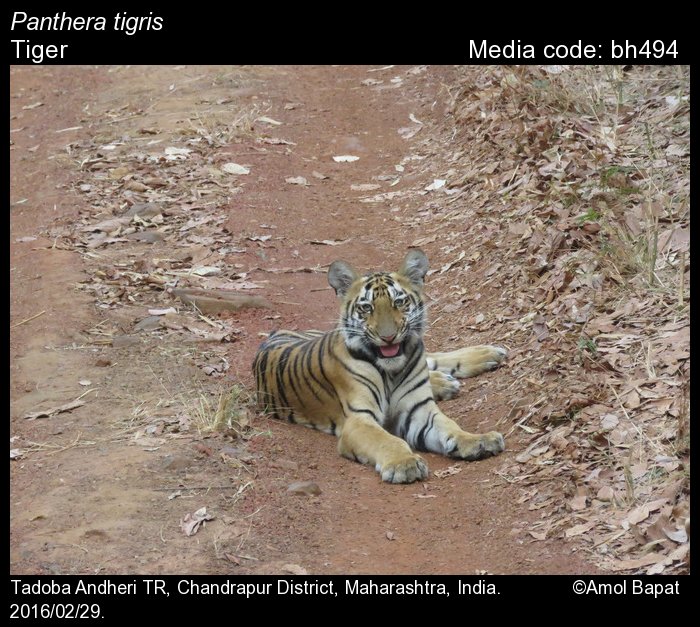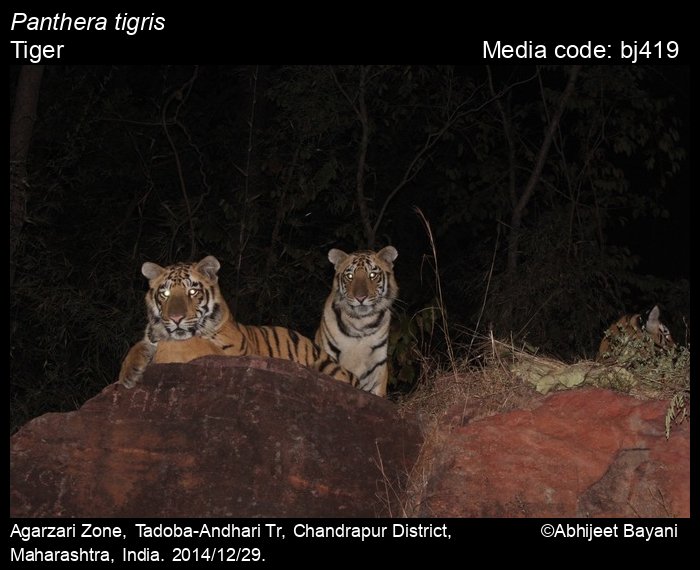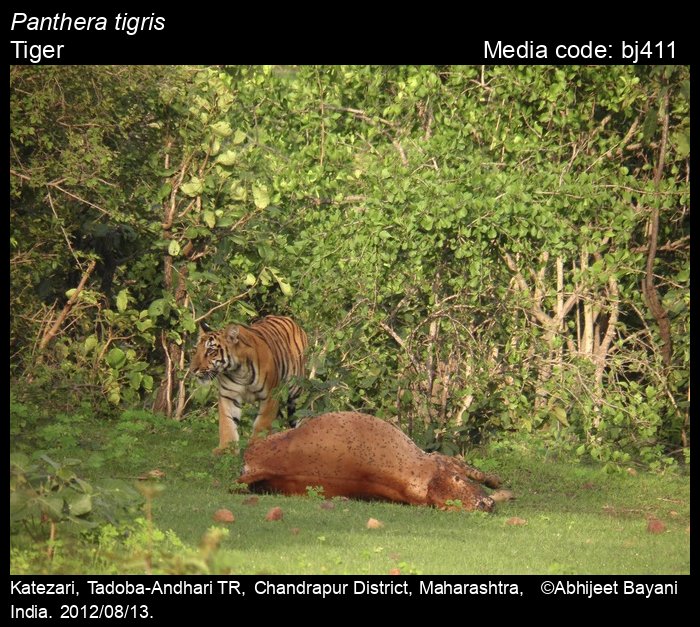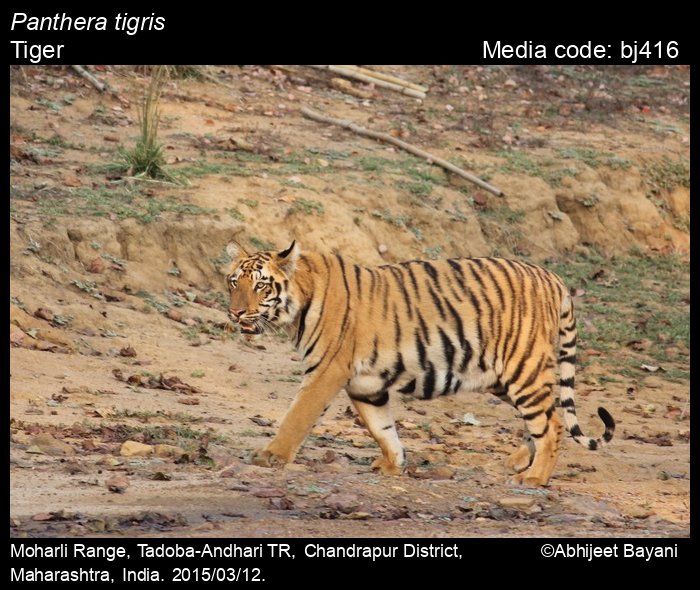
Subspecies in India
Various taxonomists have periodically suggested different number of subspecies of Tiger. Owing to highly scattered distribution and occupancy of this species in various habitats led earlier taxonomist to assign different subspecies status to various populations. However, currently based on a combined evidence from morphological and molecular studies it is by-and-large accepted that tiger has two subspecies recognized that have various populations, viz. continental Asia Panthera tigris tigris and Sunda Islands Panthera tigris sondaica. Previously recognized subspecies P. t. virgata, P. t. altaica, P. t. amoyensis, P. t. corbetti, and P. t. jacksoni are synomized with P. t. tigris, whereas, P. t. balica, and P. t. sumatrae are synonymized with P. t. sondaica. In other words Panthera tigris tigris has distinct populations that were once thought to be different subspecies such as Bengal/Indian Tiger, Caspian Tiger, Siberian Tiger, South China Tiger, Indochinese Tiger, Malayan Tiger. Panthera tigris sondaica include Javan tiger, Bali Tiger, and Sumatran Tiger.
Photo Gallery and Species Biology
Tiger once ranged widely in Himalayan foothills, whole of Indian subcontinent, Malay Peninsula, Bali, and Sunda Islands. It is extirpated from more than 90% of its historic range and it is present as a heavily fragmented population. In India, it is mostly distributed in southern India, central India, NE India, and Himalayan foothills. Tiger inhabits a variety of habitats that include tropical evergreen and semi-evergreen forests, deciduous and semi-deciduous forests, scrub forests, terai, and mangroves. Tiger is an apex predator, feeding on diverse herbiores ranging from small deer and antelopes to large species such as the Gaur.
Conservation Status:
 This species is listed as Endangered in the IUCN Red List of Threatened Species (https://www.iucnredlist.org/).
This species is listed as Endangered in the IUCN Red List of Threatened Species (https://www.iucnredlist.org/).
According to IUCN Red List assessment, population of this species is decreasing all over its range. It is severely fragmented and global population is estimated between 2154 and 3159. Threat to its survival in wild come from habiatat loss, habitat fragmentation, commercial and residential development, logging, agricultural expansion, mining, fire, loss of prey, poaching, retaliatory killing, accidental electrocution, trapping, and uncontrolled tourism in some places.
According to IUCN Red List assessment, population of this species is decreasing all over its range. It is severely fragmented and global population is estimated between 2154 and 3159. Threat to its survival in wild come from habiatat loss, habitat fragmentation, commercial and residential development, logging, agricultural expansion, mining, fire, loss of prey, poaching, retaliatory killing, accidental electrocution, trapping, and uncontrolled tourism in some places.
| State | Jan | Feb | Mar | Apr | May | Jun | Jul | Aug | Sep | Oct | Nov | Dec | No date |
|---|---|---|---|---|---|---|---|---|---|---|---|---|---|
| Andaman and Nicobar Islands | |||||||||||||
| Andhra Pradesh | |||||||||||||
| Arunachal Pradesh | |||||||||||||
| Assam | |||||||||||||
| Bihar | |||||||||||||
| Chandigarh | |||||||||||||
| Chhattisgarh | |||||||||||||
| Dadra & Nagar Haveli | |||||||||||||
| Daman & Diu | |||||||||||||
| Delhi | |||||||||||||
| Goa | |||||||||||||
| Gujarat | |||||||||||||
| Haryana | |||||||||||||
| Himachal Pradesh | |||||||||||||
| Jammu and Kashmir | |||||||||||||
| Jharkhand | |||||||||||||
| Karnataka | 1 | 5 | 2 | 2 | 1 | ||||||||
| Kerala | |||||||||||||
| Lakshadweep | |||||||||||||
| Madhya Pradesh | 1 | 2 | 3 | 5 | 3 | 4 | 1 | ||||||
| Maharashtra | 2 | 1 | 1 | 11 | 1 | 1 | 11 | ||||||
| Manipur | |||||||||||||
| Meghalaya | |||||||||||||
| Mizoram | |||||||||||||
| Nagaland | |||||||||||||
| Odisha | |||||||||||||
| Paschimbanga | 1 | ||||||||||||
| Pondicherry | |||||||||||||
| Punjab | |||||||||||||
| Rajasthan | 2 | 1 | |||||||||||
| Sikkim | |||||||||||||
| Tamil Nadu | |||||||||||||
| Tripura | |||||||||||||
| Uttar Pradesh | |||||||||||||
| Uttarakhand | |||||||||||||
| West Bengal | |||||||||||||
| Total | 2 | 3 | 3 | 21 | 6 | 4 | 1 | 2 | 6 | 11 | 3 |
Page citation
Anonymous 2024. Panthera tigris Linnaeus, 1758 – Tiger. In Bayani, A., R. Chakravarty, and K. Kunte (Editors) (Chief Editors). Butterflies of India, v. 1.13. Published by the Indian Foundation for Butterflies. URL: https://www.mammalsofindia.org/panthera-tigris, accessed 2024/05/13.






